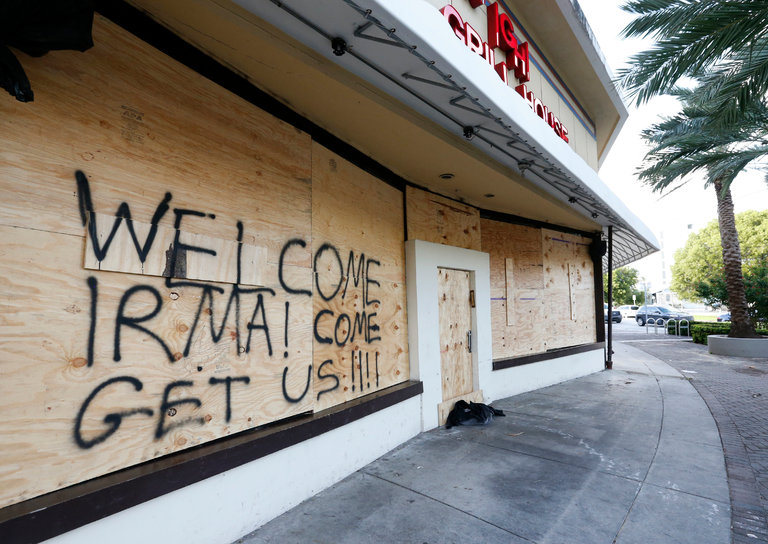LISTEN TO TLR’S LATEST PODCAST:
Michael Bastasch
Hurricane Irma made landfall in Florida on Sunday morning after making its way across the Atlantic as one of the most powerful storms on record.
Irma’s sheer size and power had many asking, what allowed it to get so strong?
“The dynamical set up in the atmosphere was extremely favorable for Irma to develop into a major hurricane and maintain very high intensity,” climatologist Judith Curry told The Daily Caller News Foundation.
Irma formed off the African coast in late August and quickly became a hurricane strength event in sea surface temperatures around 80 degrees Fahrenheit. Within hours, Irma became a Category 3 storm.
Hurricanes need warm water, low wind shear and lots of moisture to gain strength. Irma formed at the perfect time. Hurricane season usually peaks in September when the Atlantic Ocean sees its hottest temperatures and has a lot of moisture.
Curry said a major reason Irma was able to intensify so quickly because of weak wind shear. Wind shear takes away the heat and moisture hurricanes feed off and it tilts a storm’s vortex, further weakening it. Irma was able to put warm water and moisture to use because of the low wind shear.
“In fact, the dynamics were probably more important than the warm sea surface temperatures in the Atlantic and Caribbean,” Curry said. “Irma reached Cat 3 status over temperatures in the Atlantic that weren’t all that warm.”
The storm reached Category 5 as it moved into warmer air and water near the Caribbean. Irma maintained wind speeds of 185 miles per hour for 37 hours — a record in the satellite era.
Irma temporarily weakened after making landfall in Cuba, but strengthened to a Category 4 storm Sunday morning when it hit the Florida Keys.
Irma hit Florida has a Category 3 storm, bringing 142-mile-per-hour wind gusts and “catastrophic” storm surge, according to weather forecasting officials.
For days, Florida residents prepared for the massive storm. Many saw the footage of complete devastation wrought by the massive storm, which was much larger than the infamous Hurricane Andrew in 1992.
Irma weakened to a Category 2 by the evening while making its way up Florida’s west coast.
Irma made landfall a little more than two weeks after Hurricane Harvey hit the Texas coast, which was linked to man-made global warming by some in the climate science community.
University of Washington climate scientist Cliff Mass took on claims global warming made Hurricane Harvey worse. He looked at the data and found man-made warming played an “inconsequential” role in the storm.
“There is probably some contribution associated with increasing sea surface temperatures, but it is probably modest since temperatures in the area have only warmed about 1 degree Celsius during the past 50 years,” Mass told TheDCNF, referring to Irma.
Some scientists argued long-term ocean warming fueled Irma and that sea level rise made its storm surge worse.
“Hurricanes get their energy from warm ocean waters, and the oceans are warming because of the human-caused buildup of heat-trapping gases in the atmosphere, primarily from the burning of coal, oil and gas,” Climate scientist Michael Mann and two colleagues wrote in a Washington Post oped on Harvey and Irma.
“The strongest hurricanes have gotten stronger because of global warming,” the trio wrote in their oped titled “Irma and Harvey should kill any doubt that climate change is real.”
“Over the past two years, we have witnessed the most intense hurricanes on record for the globe, both hemispheres, the Pacific and now, with Irma, the Atlantic,” they wrote.
But Intergovernmental Panel on Climate Change (IPCC) says there’s “no significant observed trends in global tropical cyclone frequency over the past century.” Likewise, there doesn’t seem to be a trendin storm intensity either.
“The climate dynamics of hurricanes is an active area of research. Naive reasoning about warmer sea surface temperatures doesn’t tell you all that much about what is going on,” Curry told TheDCNF.
Follow Michael on Facebook and Twitter





3 comments
… [Trackback]
[…] Read More to that Topic: thelibertarianrepublic.com/how-did-irma-get-so-strong-hint-not-global-warming/ […]
… [Trackback]
[…] Find More Info here on that Topic: thelibertarianrepublic.com/how-did-irma-get-so-strong-hint-not-global-warming/ […]
… [Trackback]
[…] Info on that Topic: thelibertarianrepublic.com/how-did-irma-get-so-strong-hint-not-global-warming/ […]